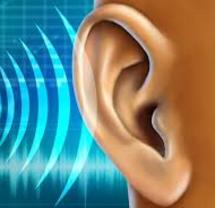Long Island (516) 731-5868 Queens (718) 641-3817
HARMONY
Hearing & Speech Center
 | ||||
Call us
(516) 731-5868
(718) 641-3817
Helping You Enjoy Eating Throughout Your Life
Normal swallowing, also known as deglutition, can be divided into three areas or phases as follows:
Oral Phase – In this phase, the lips, tongue and teeth are used to chew the food and move it around in the mouth to form a ball or “bolus”. Once a nicely formed bolus is formed, it is then transported or pushed to the back of the tongue and a swallow is triggered. This phase of swallowing is voluntary since the individual is controlling the food inside the oral cavity or mouth.
Pharyngeal Phase – In this phase of swallowing, the movement of the bolus is no longer voluntary. The muscles are now controlling how the bolus moves from the back of the tongue and now down the pharynx or throat. In this phase, it is important that the larynx or voice box moves upward so that the airway is closed off by a flap called the epiglottis, preventing the bolus (food) from entering the lungs.
Esophageal Phase – Once again, this phase of swallowing is involuntary because the muscles are controlling the movement of the bolus. It is during this phase of swallowing or deglutition that the bolus is propelled down into the stomach by a series of muscle contractions known as peristalsis.
What happens when this perfect synchrony of taking a sip of liquid or a bite of food is interrupted on a persistent basis? The ability to swallow easily and safely is impaired and can now be defined as “dysphagia”.
What is dysphagia?
Dysphagia is a condition that causes an individual to experience difficulty when swallowing. There are many causes of dysphagia and symptoms can vary greatly among individuals. Symptoms of dysphagia may range from very mild to very severe. Individuals who experience difficulty swallowing may have difficulty swallowing liquids, certain types of foods, or even their own saliva. In very severe cases, dysphagia can result in a complete inability to swallow.
Difficulties with swallowing will not only impact on the ability to maintain adequate nutrition and hydration, but, can have a major impact on overall quality of life.
Dysphagia can affect individuals of all ages; ranging in age from infant to geriatric.
According to The National Foundation of Swallowing Disorders, epidemiologic studies indicate that the numbers of individuals with dysphagia may be as high as 22% of the population over the age of 50 years old, and 40 to 60% of individuals over the age of 65 years old residing in nursing homes experience dysphagia.
What are the symptoms of dysphagia?
According to the American Speech-Language-Hearing Association, children with dysphagia may present with the following signs and symptoms. These signs and symptoms will vary and may not present in every child:
• Arching or stiffening of the body during feeding
• Irritability or lack of alertness during feeding
• Refusing food or liquid
• Failure to accept different textures of food (e.g. only pureed foods or
crunchy cereals)
• Long feeding times (e.g. more than 30 minutes)
• Difficulty chewing
• Difficulty breast feeding
• Coughing or gagging during meals
• Excessive drooling or food/liquid coming out of the mouth or nose
• Difficulty coordinating breathing with eating and drinking
• Increased stuffiness during meals
• Gurgly, hoarse,or breathy voice quality
• Frequent spitting up or vomiting
• Recurring pneumonia or respiratory infections
• Less than normal weight gain or growth
Dysphagia can put the child at risk for one or more of the following:
• Aspiration pneumonia which results from food or liquid entering the airway
and passing into the lungs
• Dehydration
• Inadequate nutrition
• Repeated upper respiratory infections
• Avoidance of social situations which will ultimately affect emotional well being
According to the American Speech-language-hearing Association, adults with dysphagia may present with the following signs and symptoms. Again, these signs and symptoms will vary among individuals:
• Coughing during or right after eating or drinking
• Wet or gurgly sounding voice during or after eating or drinking
• Extra effort or time needed to chew or swallow
• Food or liquid leaking from the mouth or getting stuck in the mouth
• Recurring pneumonia or chest congestion after eating
• Weight loss or dehydration from not being able to eat or drink enough
Dysphagia can put the adult individual at risk for one or more of the following:
• Dehydration
• Inadequate nutrition
• Aspiration pneumonia resulting from food or liquid entering the lungs
• Social isolation resulting from restriction of eating a variety of foods which
leads to avoidance of participation in social activities
• Fear of eating
• Emotional disturbance such as depression
What causes dysphagia?
Dysphagia itself is not a disease. Dysphagia is disorder that presents as the result of an underlying cause.
Causes of dysphagia in children may include:
• Developmental delays associated with premature birth, as well as low
birth weights
• Respiratory disorders
• Craniofacial disorders such as cleft palate as well as other genetic syndromes
Causes of dysphagia in adults may be due to:
• Aging – muscles of the mouth, throat and esophagus become weak as
an individual ages resulting in an inability to move food and liquid from the
oral cavity back to the throat, into the esophagus and finally into the stomach
• Infections or irritations that obstruct or cause narrowing of the esophagus.
For example, ulcers and tumors.
• Neurological conditions which affect muscle strength and coordination of
the structures involved in eating and drinking. Some of the causes may be
cerebral vascular accidents (stroke), Parkinson’s Disease, Multiple Sclerosis,
Amyotropic lateral sclerosis (ALS or Lou Gerhig’s Disease), Muscular
Dystrophy, Alzheimer’s Disease, traumatic brain injury, and brain tumors.
How does the speech pathologist determine if a swallowing disorder exists?
The following assessments are used by speech pathologists who are highly skilled in evaluating an individual for swallowing dysfunction:
• Modified Barium Swallow Study (MBSS) – is an objective evaluation of the
swallow mechanism. An x-ray video is used while the individual swallows
different food consistencies and liquids that contain a contrast material called
barium. This assessment is used for determining if the individual is at risk for
aspiration or is aspirating on food and/or liquid while swallowing. The study
assists the speech pathologist in recommending dietary modifications and in
preparing a treatment plan for the individual.
• Fiberoptic Endoscopic Evaluation of Swallowing (FEES) – is a test used to
evaluate swallowing function. The speech pathologist passes a flexible
endoscope through the nose to observe the throat while the individual is eating
and drinking. The test is used to determine the individual’s ability to swallow food
and liquid safely. Based on the findings of FEES, the speech pathologist will
determine if diet modification is required to ensure adequate nutrition and
hydration.
Based on clinical observation, the taking of a comprehensive background and medical history, and administration and interpretation of objective assessments, a plan of treatment will be considered.
If the results of the assessment indicate that the individual is at risk for aspiration or is aspirating then the speech pathologist will recommend that the patient follow a modified textured diet. Depending upon the degree of aspiration will determine the level of diet which may be prescribed. There are levels that include pureed textures where all food must be of a smooth consistency with all lumps eliminated. The next level is mechanically altered and the next level thereafter is dysphagia advanced. Some individuals may not be able to eat safely without aspirating and for those individuals a feeding tube may be recommended.
Until recently, individuals who were required to eat a pureed textured diet did not look forward to eating because their menu consisted essentially of mushy looking food that was difficult to identify.
But, today there are several companies who have been working diligently to prepare food that tastes and looks more appealing. Although, some companies have been able to improve the taste of pureed food there is only one company that has revolutionized the preparation of pureed food to look and taste like regular food. That company is Textured Food Innovations. Textured Food Innovations has developed a patented formula to prepare pureed meals that are contoured to look just like the food that everybody else is eating, The difference is that Textured Food Innovations is able to prepare meals that are pureed to be safe to swallow, reduce the chances for aspiration, provide adequate nutrition and bring back the joy of eating because meals are absolutely delicious and visually appealing.
To learn more about the wonderful pureed menu that Textured Food Innovations offers
contact them directly by clicking here
Normal Swallowing & Swallowing Disorders








